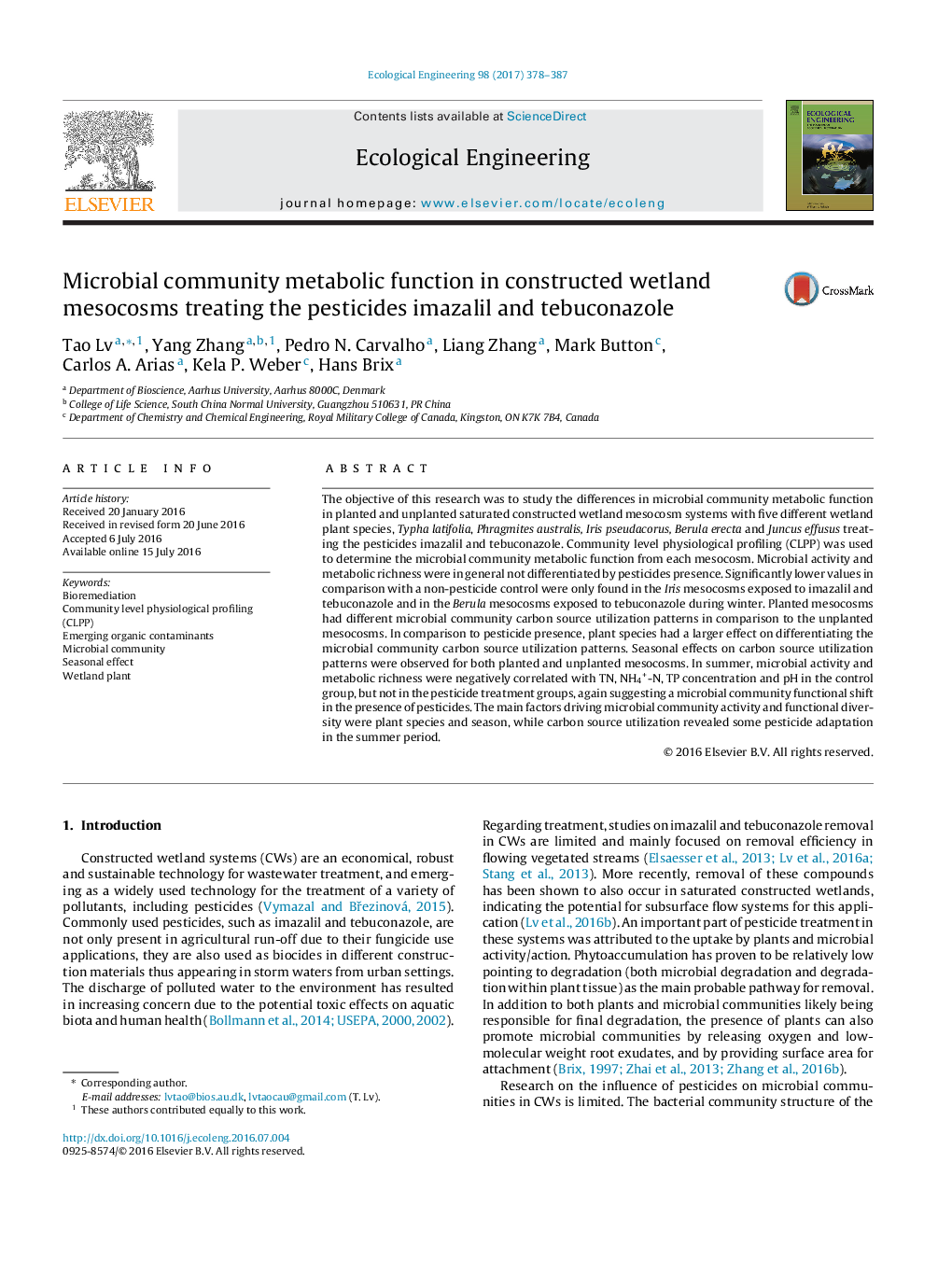| کد مقاله | کد نشریه | سال انتشار | مقاله انگلیسی | نسخه تمام متن |
|---|---|---|---|---|
| 5744040 | 1618001 | 2017 | 10 صفحه PDF | دانلود رایگان |
- Plants and season were the determining factors for the microbial community profile.
- Imazalil and tebuconazole presence generally did not affect microbial activity.
- Microbial community of unplanted mesocosms were driven by the influent water.
- Carbon source utilization revealed some microbial adaptation to pesticides.
The objective of this research was to study the differences in microbial community metabolic function in planted and unplanted saturated constructed wetland mesocosm systems with five different wetland plant species, Typha latifolia, Phragmites australis, Iris pseudacorus, Berula erecta and Juncus effusus treating the pesticides imazalil and tebuconazole. Community level physiological profiling (CLPP) was used to determine the microbial community metabolic function from each mesocosm. Microbial activity and metabolic richness were in general not differentiated by pesticides presence. Significantly lower values in comparison with a non-pesticide control were only found in the Iris mesocosms exposed to imazalil and tebuconazole and in the Berula mesocosms exposed to tebuconazole during winter. Planted mesocosms had different microbial community carbon source utilization patterns in comparison to the unplanted mesocosms. In comparison to pesticide presence, plant species had a larger effect on differentiating the microbial community carbon source utilization patterns. Seasonal effects on carbon source utilization patterns were observed for both planted and unplanted mesocosms. In summer, microbial activity and metabolic richness were negatively correlated with TN, NH4+-N, TP concentration and pH in the control group, but not in the pesticide treatment groups, again suggesting a microbial community functional shift in the presence of pesticides. The main factors driving microbial community activity and functional diversity were plant species and season, while carbon source utilization revealed some pesticide adaptation in the summer period.
160
Journal: Ecological Engineering - Volume 98, January 2017, Pages 378-387
